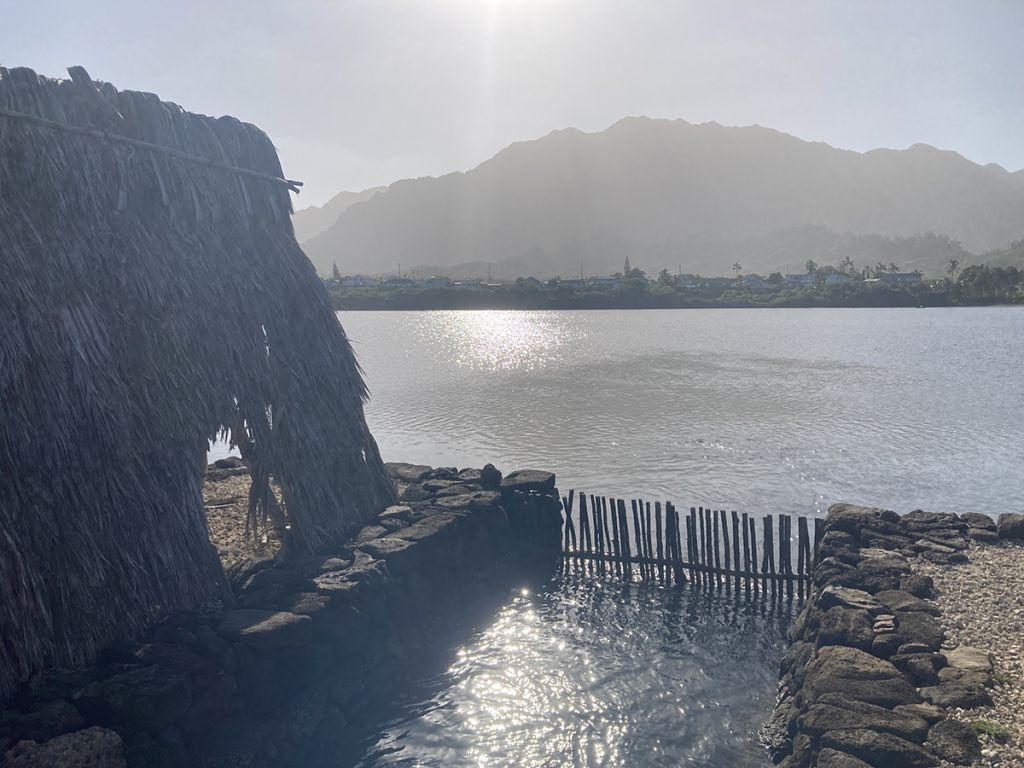Effect of extreme tidal events on future sea-level rise scenarios for He‘eia fish communities undergoing ahupua‘a restoration

For the past few years, “king tides,” or the highest tides of the year, have been occurring more frequently and significantly affecting coastal environments across Hawaiʻi. Now, disappearing beaches and waves crashing over roadways are seemingly the “new normal.” In response, the state of Hawaiʻi is implementing adaptation strategies to combat tidal flooding in coastal areas. While flood management strategies are being implemented in urban areas, less is known about how tidal flooding, and associated inundation into surface and groundwater, might influence watershed dynamics and the native animals that depend on estuarine environments where freshwater meets the sea. Efforts for biocultural restoration of ecosystem function and return to sustainable food production are based on the Indigenous resource management strategy rooted in the ahupuaʻa (i.e. a holistic Native Hawaiian watershed management system from mountains to the sea), which encompasses adaptations to dynamic and seasonal variations in climate. As Hawaiʻi continues these practices, it is important to understand how vulnerable such resources are to effects of climate change, such as sea-level rise.
Knowing the baseline distribution of fish communities in a watershed, and how these communities shift during king tide events, will provide Indigenous resource managers a preview of how native species in their watershed respond to future sea-level rise. This project uses a novel, adaptive scientific tool to assess how fish diversity changes throughout the tidal cycle, giving insight to changes in fish habitat and passage during extreme tides. Additionally, the project team will work with resource managers to co-develop a biodiversity toolkit which can be used to track fish diversity as an indicator of how their ecosystem responds to changes in their environment.
Through a process of reciprocal collaboration, the research team aims to develop equitable partnerships with researchers and community resource managers. The overall goal is to increase resilience of Hawaiʻi’s coastal areas by equipping Indigenous resource managers with the tools to evaluate and adapt their management and restoration strategies in the face of climate change.
PROJECT DETAILS
FUNDED:
FY2021
PI:
Yoshimi Rii
Research Coordinator, He’eia NERR/HIMB, UH Mānoa
Co-Is:
Rob Toonen
Research Professor, HIMB, UH Mānoa
Kawika Winter
Reserve Manager, Heʻeia NERR/HIMB, UH Mānoa
Kaleonani Hurley
Post-doctoral fellow, Heʻeia NERR/HIMB, UH Mānoa
Collaborators:
Katy Hintzen
Hawaiʻi Sea Grant College Program/PI-CASC
Kānekoa Kukea-Shulta
Kākoʻo ʻŌiwi
Hiʻilei Kawelo
Paepae o Heʻeia
Kevin Chang
Kuaʻaina Ulu ʻAuamo
Miwa Tamanaha
Kuaʻaina Ulu ʻAuamo
Brenda Asuncion
Kuaʻaina Ulu ʻAuamo
Ryan Okano
Hawaiʻi Division of Aquatic Resources
Anthony Olegario
Hawaiʻi Division of Aquatic Resources
Kim Peyton
Hawaiʻi Division of Aquatic Resources
Kim Falinski
The Nature Conservancy
Bradley Kai Fox
Hawaiʻi Sea Grant College Program
Yinphan Tsang
NREM, UH Mānoa

